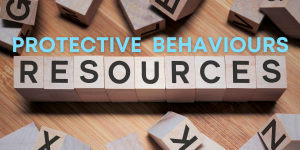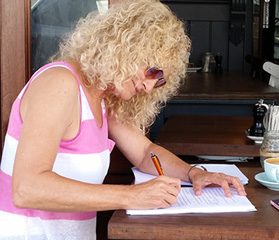

As a facilitator of the Protective Behaviours program, I’ve witnessed hundreds of children empowered with the knowledge of how to keep themselves and others safe.
Protective Behaviours (PBs) provides a range of skills and strategies to help prevent and reduce child abuse and violence in the community. PBs is mandatory in Western Australian schools and consists of age-appropriate topics beginning in the early years of school.[1]https://k10outline.scsa.wa.edu.au/home/p-10-curriculum/curriculum-browser/syllabus/health-and-physical-education-overview/glossary/protective-behaviours
Protective Behaviours (PBs) is a universal empowerment program
As a holistic approach for everyone, the PBs program is integrated into the school curriculum, reinforced at home, and delivered in communities to educators, professionals, and families.
For children, Protective Behaviours education focuses on personal safety, which enables them to assert their right to physical and psychological safety and to seek help from trusted adults if they feel unsafe.
This universal framework consists of themes, strategies, and concepts that develop personal body safety and life skills. It teaches children emotional literacy, assertiveness, resilience, persistence, optimism, to problem solve and be adventurous in safely risking on purpose.
In Australia, the origins of PBs served as a child abuse prevention program. Although the PBs program applications have universally evolved over the years and are known by other names, the fundamental foundations as a body safety program remain consistent.
Protective Behaviours educational program
Just like any framework, Protective Behaviours (PBs) education follows a pattern of topics. The teaching of these topics in chronological succession equips children with foundational knowledge of the themes and strategies that are recalled and built upon as new key learning topics are introduced. As children progress through the topics, they are developing a language of safety and provided with strategic skills to make decisions about their personal safety and wellbeing.
Protective Behaviours is reinforced by two core themes:
We all have the right to feel safe at all times.
We can talk with someone about anything, no matter what it is.
Key learning PB topics
Protective interruption is any action taken to interrupt a potentially unsafe situation. This includes keeping children safe from making inappropriate public disclosures. It protects both the child disclosing and the participants. It is a strategy that prevents a child from disclosing in front of other children. It provides the child who is disclosing with the opportunity to disclose in a safe, confidential, and private space.
*Most schools have a designated PBs program to teach the educational program to students. PBs Topics may have different names and be in a different sequence of teaching.
There are many recommended PBs Picture books, games and resources to teach the PBs program. Check out this blog Resources to teach children Protective Behaviours.
[2]https://www.protectivebehaviours.org/what-does-protective-behaviours-mean


Hello and welcome to my blog.
I love writing and sharing my journey as an author and encourage others to write their stories too.